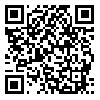BibTeX | RIS | EndNote | Medlars | ProCite | Reference Manager | RefWorks
Send citation to:
URL: http://irj.uswr.ac.ir/article-1-383-en.html
Objectives: Semantic Feature Analysis was designed to improve lexical retrieval of aphasic patients via activation of semantic networks of the words. In this approach, the anomic patients are cured with semantic information to assist oral naming. The purpose of this study was to examine the effects of Semantic Feature Analysis treatment on anomia of two nonfluent aphasic patients.
Methods: A single-subject study with ABA design was applied to two Persian-speaking patients with chronic nonfluent aphasia. Assessment, baseline, ntervention and maintenance phases were carried out respectively during 6 weeks. A picture naming task which was made up of pictures with high name- agreement comprising 12 target, 18 non-treated control and 5 easy words was used for probes and intervention. Intervention was performed in 5 successive days, 60 minutes per session. Descriptive statistics, level, trend & slope analyses, C and d statistics were used for data analysis.
Results: Both participants revealed statistically significant improvements in naming target words. Some generalizations to control words was also occured. A minimal decrease in naming of target words was observed in maintenance phase but the naming ability was still above the baseline. The therapy maintenance effect size for both patients were obtained as medium.
Discussion: The findings of the current study seems to confirm Semantic Feature Analysis as an effective intervention for improving naming ability of Persian-speaking aphasic patients.
Received: 2014/05/17 | Accepted: 2014/07/21 | Published: 2014/09/1
| Rights and permissions | |
 |
This work is licensed under a Creative Commons Attribution-NonCommercial 4.0 International License. |





